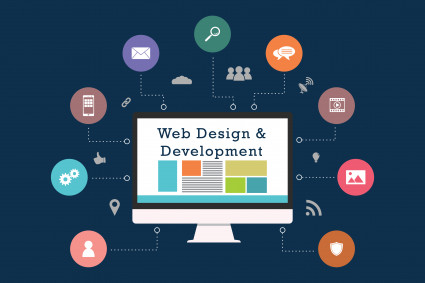
The Essence of Web Designing
At its core, web designing revolves around creating visually appealing, user-friendly, and functional websites that effectively convey their intended message. This intricate process encompasses a range of activities, including:
Planning and Conceptualizing: Web designers begin by understanding the client's goals, target audience, and brand identity. They then create wireframes and mockups to visualize the website's layout and structure.
Visual Design: Web designers employ their artistic skills to select colors, typography, and imagery that align with the website's purpose and brand. They strive to create a cohesive and aesthetically pleasing visual experience.
User Interface (UI) Design: UI design focuses on the interactive elements of a website, ensuring that users can easily navigate and interact with its content. Designers meticulously design buttons, menus, and other interactive elements for optimal usability.
User Experience (UX) Design: UX design delves into the overall user experience, considering how users interact with the website to achieve their goals. Designers conduct user research and testing to identify and optimize user flows, ensuring a smooth and intuitive experience.
Front-End Development: Web designers often collaborate with front-end developers to translate their designs into functional web pages. They may utilize tools like HTML, CSS, and JavaScript to bring their creative vision to life.
Skillset of a Web Designer
Web designers possess a blend of creative and technical skills, including:
Visual Design Skills: Strong sense of aesthetics, color theory, and typography.
UI/UX Design Principles: Understanding of user-centered design principles, usability heuristics, and information architecture.
Front-End Development Knowledge: Familiarity with HTML, CSS, and JavaScript to implement their designs.
Communication and Collaboration Skills: Ability to effectively communicate ideas and collaborate with clients, developers, and other team members.
Problem-Solving and Adaptability: Ability to identify and solve design challenges, adapt to changing requirements, and stay up-to-date with web design trends and technologies.
Impact of Web Designing
Web designing plays a pivotal role in today's digital landscape, influencing individuals and businesses alike:
Businesses: Websites serve as a crucial marketing tool, attracting customers, establishing brand identity, and facilitating online sales.
Individuals: Websites provide platforms for self-expression, professional networking, and access to information and services.
Society: Websites contribute to global communication, cultural exchange, and the dissemination of knowledge.
The Future of Web Designing
As technology advances and user expectations evolve, web designing continues to adapt and innovate. Emerging trends include:
Mobile-First Design: Websites are increasingly designed with mobile devices in mind, prioritizing responsive design and touch-friendly interfaces.
User-Centric Design: The focus on user experience intensifies, with designers employing data-driven approaches to optimize user flows and interactions.
Emergence of New Technologies: Virtual reality, augmented reality, and voice interfaces are poised to transform web design, creating immersive and interactive experiences.
Conclusion
Web designing remains a dynamic and evolving field, shaping the digital landscape and influencing how we interact with the online world. As technology advances and user expectations evolve, web designers will continue to adapt and innovate, crafting digital spaces that are not only visually appealing but also functional, user-centered, and impactful.


